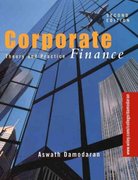Question
Question1: Which of the following investments does a rational investor prefer? Select one: a. Investment A: E(R) = 10%, S.D. = 3% b. Investment B:
Question1:
Which of the following investments does a rational investor prefer? Select one: a. Investment A: E(R) = 10%, S.D. = 3% b. Investment B: E(R) = 10%, S.D. = 5% c. Investment C: E(R) = 11%, S.D. = 3% d. None of the above, as a rational investor would require more information from which to make a decision.
Question2:
A trade-off between the benefits of debt finance and the costs of financial distress may lead to a company increasing its debt/equity ratio because Select one: a. of the low probability of encountering severe financial difficulties. b. its existing debt/equity ratio is high. c. the expected increase in financial distress is expected to outweigh the tax benefits. d. agency costs of equity increase as the level of debt increases
Question3:
Hadley company pays dividends of $9.5 per share on its preference shares, which have a par value of $100 each share. If the current market price of preference share is $73, what will be the cost of Hadley preference shares? Select one: a. 8% b. 9.5% c. 11% d. 13%
Step by Step Solution
There are 3 Steps involved in it
Step: 1

Get Instant Access to Expert-Tailored Solutions
See step-by-step solutions with expert insights and AI powered tools for academic success
Step: 2

Step: 3

Ace Your Homework with AI
Get the answers you need in no time with our AI-driven, step-by-step assistance
Get Started


